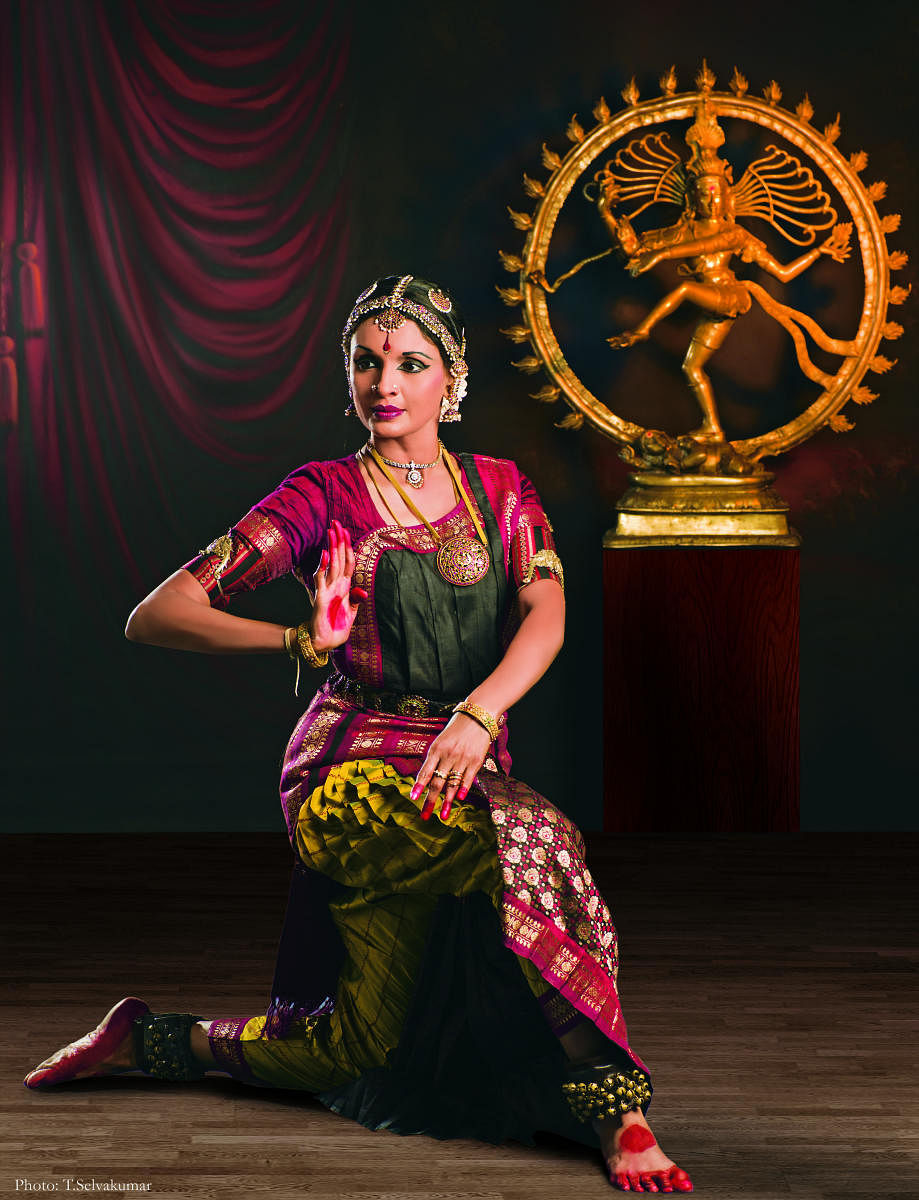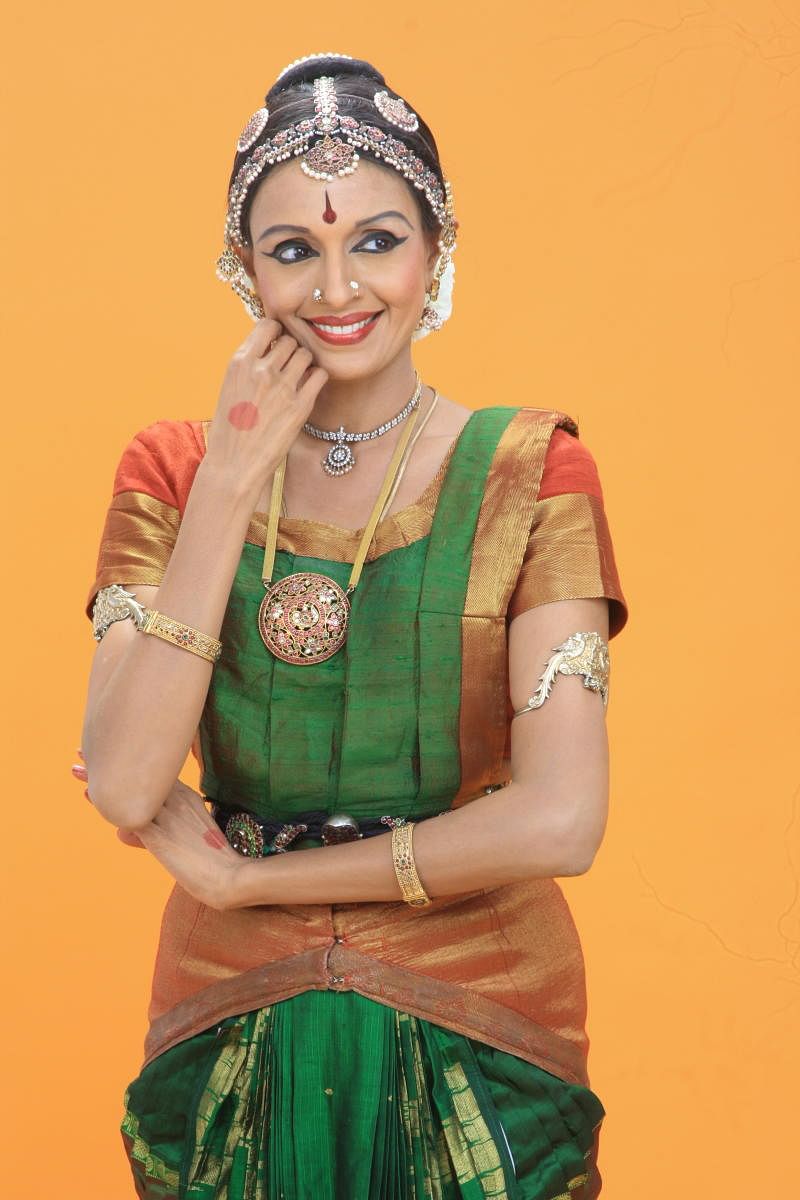Art must go on


On a Sunday morning in April, dancer Priyadarsini Govind was to conduct a workshop as part of the National Centre for the Performing Arts’ Mudra Dance Festival, in Mumbai. More than 20 dancers had registered for the workshop. Dressed in a cotton saree, she started teaching a kauthuvam in praise of Shanmugam. The intensity on both Priyadarsini and the participants seemed of equal degree throughout. Having watched her performances for more than two decades, one knew her strengths as a dancer of eminence.
Once, in an international conference in Chicago, where Kalanidhi Narayanan, her abhinaya teacher, gave a workshop, Priyadarsini also gave a solo recital. She enacted, among other padams, the poem of Sangam period so movingly that it left an indelible impression on me. Her fame as ‘a flag-bearer of Kalanidhi’s art of padams’ is common knowledge.
Trained from the age of six and for advance training from the age of nine under Kalanidhi Narayanan for abhinaya, later on, she studied the vazhuvoor style of bharatanatyam under Swamimail K Rajaratnam Pillai. Today, she has achieved eminence as a top-ranking bharatanatyam exponent.
Lengthy recall
When we met, she had already retired from the post of Director of Kalakshetra. She was evidently relaxed.
But, it was not an easy job that she had accepted as a challenge at the zenith of her career. Priyadarsini had to take up the position at her sister-lawyer’s insistence within a short notice after the previous president exited amid controversy.
First, she was not from Kalakshetra; she belonged to a different bani. But once she took charge from August 5, 2013, she devoted all her time to Kalakshetra, learning about it every day — its philosophy, the vision of Rukmini Devi (the founder), and found her work more absorbing. “I never imposed my views on the art practices prevalent in Kalakshetra,” she recalled.
She saw that the dance-dramas performed were in line with what Rukmini Devi had visualised. So, she sought guidance from senior artistes. Slowly she understood that work could be done without conflicts with the academy’s teaching staff and students.
When I was invited to talk on ‘Remembering Rukmini Devi’, I saw her younger assistants in the fore always, while she chose to remain in the background. With guidance from Chairman Gita Ram of Crafts Council of India, she also revived the weaving department, held workshops in colour matching and natural and chemical dyes. When she joined, there were three looms working. During her tenure, she ensured six looms for silk and eight looms for cotton, and the number of pre-orders for Kalakshetra sarees increased.
Within a year there, she met with personal tragedies. Her husband passed away, and soon after, her mother passed away. They were the two most important pillars of support in her life. But she returned to work within three days of her husband’s death. She said with conviction that “grieving is a personal-private matter, and working for a public institution is formal and official duty.” The work acted as a balm to her pain.
She paid attention to academic and artistic matters, devised collaborations with universities for degree courses, which are under consideration with the Ministry of Culture; interactions with art institutions abroad, for exchange on deputation, development of repertory as an independent entity. The executive board members, the chairman and she saw that one Kalakshetra theatre was rebuilt and another one repaired. She initiated the documentation of ‘Oral History of Kalakshetra’ and ensured its completion within two years. She revived the Kalakshetra journal, saw that administration rules for recruitment were regularised. For the non-Kalakshetra alumnus, she started Prasarana, a festival of faculty members, and for Kalakashetra alumnus, a festival, Suvritti of dances by dancers of her generation so that they could learn about other styles. She also organised a four-day festival, Niram Thiram, for celebrating textiles!
All these experiences were profound and helped her grow as an artiste, administrator, and a human being.
We returned to the topic of today’s generation and how it looks at classical arts. Priya said that the times when she and her contemporaries were able to devote a lot of time to learning dance under guru-shishya parampara are now gone with frenzied activities for visibility.
She stressed that the most important factor is patience on part of the teacher and the student, which can produce artistes of calibre. Dance is a demanding art and one has to learn and assimilate knowledge of architecture, sculpture, poetry, literature, music, aesthetics, light design, and the ability to explain dance numbers before presenting, she said. She apprecited dance collectives — like ABHAI in Chennai, which works on democratic principles and makes it possible to learn different styles of dance from senior gurus. Priya teaches with patience.
Among her dedicated students at present are two — Shwetha Prachande, who has studied under her for 15 years; and Apoorva. Priya also conducts workshops abroad and has a busy schedule of performances lined up. She did not perform during her service at Kalakshetra as it would have been a conflict of interest. But now she is back in form.
She has much experience to her credit. Her collaboration with T M Krishna and Bombay Jayshree, performing for Gowri Ramnarayan’s Avalum Nokinal, Samyuktam Festival with Leela Samson, T M Krishna and Bombay Jayshree, commissioned works like Vande Mataram, Tamil literature work on Thirukkural, Srirangam, choreographic efforts towards Shiva Shakthi and Om Namo Narayana are indicative of her talents. Her presence in the field of television as producer in particular of Tiruppavai devotional hymns in bharatanatyam for Doordarshan has received unqualified praise. She has produced instructional DVDs and special items of margam that feature her techniques of art.
She has researched for a book on the subject ‘Art of Abhinaya’ for Kalanidhi Narayanan and for ‘Triveni’ for VAK Ranga Rao. She has, as a convener, conducted dance conferences for Kartik Fine Arts and also Krishna Gana Sabha, who conferred on her Nritya Choodamani award. This is just one among the many honours she has received.
What next?
Three years ago in Singapore, I saw her performance about the untold story of Angkor at the grand Singapore Esplanade Theatre. She has performed in major cities and international dance festivals abroad, and is often selected by Indian Council for Cultural Relations to represent India in different countries. Her large number of admirers look forward to her participation in Madras’s annual dance festival in January, one of the prestigious festivals in Chennai. Critics have commented on her ability to sustain a repose and tranquility in the artform through unhurried tempo. It brings out the emotional depths, which the critics observe, is rare among dancers of her generation. She said she seeks to explore newer meanings and interpretations in traditional numbers.
Before we parted, she told me, a former chartered accountant, that she too had a degree in Commerce and had passed Intermediate examination of CA, as she had planned to be a chartered accountant. Her father was one and was keen that she must be independent in case dance as a career did not succeed. We laughed about our former interest in the subject. Of her two children, her son is a lawyer and her daughter, interested in literature, edits books. But both are happy to be the best critics of their mother’s dance.
Deccan Herald is on WhatsApp Channels| Join now for Breaking News & Editor's Picks